5 Best Grass Types for Pennsylvania
BY CECILIA ACEVEDO | APRIL 28TH, 2023 | LAWN CARE, PENNSYLVANIASelecting the appropriate grass type is critical in achieving a stunning lawn in Pennsylvania, given its varying climates. To help you make the best decision, we’ve compiled a list of the best grass types for Pennsylvania.
From the well-known Kentucky bluegrass to the hardy and low-maintenance fine fescue, we’ll guide you in picking the perfect grass that suits your lawn’s unique needs. Ensure your lawn can withstand the challenges of Pennsylvania’s changing seasons by choosing the right grass variety.
Warm-Season vs. Cool-Season Grasses
When planting grass, it’s necessary to choose between warm-season and cool-season grasses based on the climate of your region. Cool-season grasses thrive throughout Pennsylvania. Zoysiagrass, a warm-season grass, can grow in the southernmost portions of Pennsylvania, where temperatures are warmer.
Warm-season grasses flourish in higher temperatures. During late autumn and winter, warm-season grasses go dormant, but they stay green in late spring and summer. Conversely, cool-season grasses remain green in spring and autumn. They keep the soil warm and cozy in cooler months.
Ultimately, the decision of which grass to plant hinges on the climate and weather conditions in your area. Both types of grasses, however, have the potential to create a beautiful lawn.
Best Cool-Season Grasses for Pennsylvania
The following grasses thrive in Pennsylvania’s cool and humid climate. As the name suggests, cool-season grass grows actively in the cooler months. Continue reading to learn more about the perfect cool-season grass for your backyard.
1. Kentucky Bluegrass
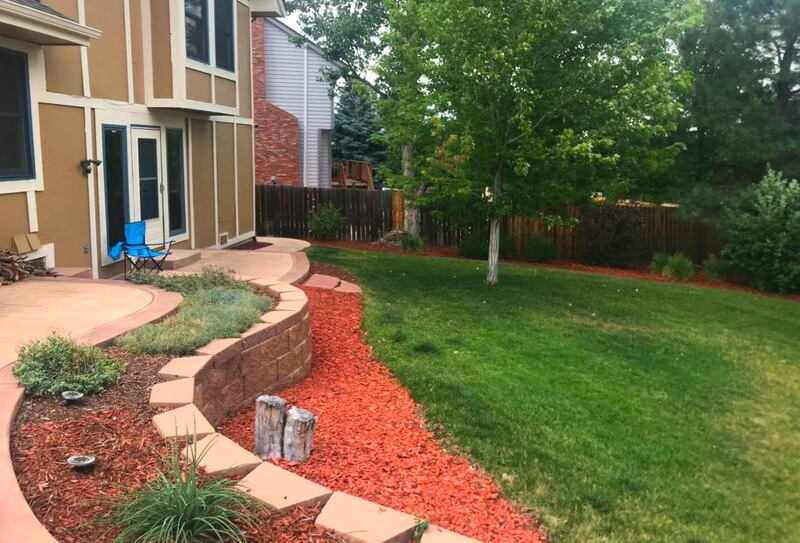
Photo Credit: Brenda Ryan / Wikilawn
Kentucky bluegrass is an excellent choice if you’re looking to prevent erosion in your yard while achieving a uniform and attractive look. This grass variety is durable, withstands moderate foot traffic, and recovers quickly, making it perfect for backyard gatherings.
Although it can tolerate drought, it may turn brown during hot, dry summers, as with all cool-season grasses. However, if you want a low-maintenance option, Kentucky bluegrass may not be the best choice, as it requires fertilizer, is susceptible to disease, and needs frequent mowing.
Classification: Cool-season grass
Spreads by: Rhizomes
Shade tolerance: Low
Drought tolerance: Moderate
Foot traffic tolerance: Moderate
Maintenance needs: Moderate mowing frequency and high fertilization needs.
Mowing height: Set mowing height between 2.5 and 3.5 inches.
Potential for disease: Moderate to high; prone to several diseases, such as dollar spot, leaf spot, necrotic ring spot, summer patch, and stripe smut.
Soil pH: 6-7.5
Soil type: Performs best in well-drained, heavy soils with high fertility.
Other notes: Tolerates close, frequent grazing better than most grasses. Forms tight sod.
2. Perennial Ryegrass
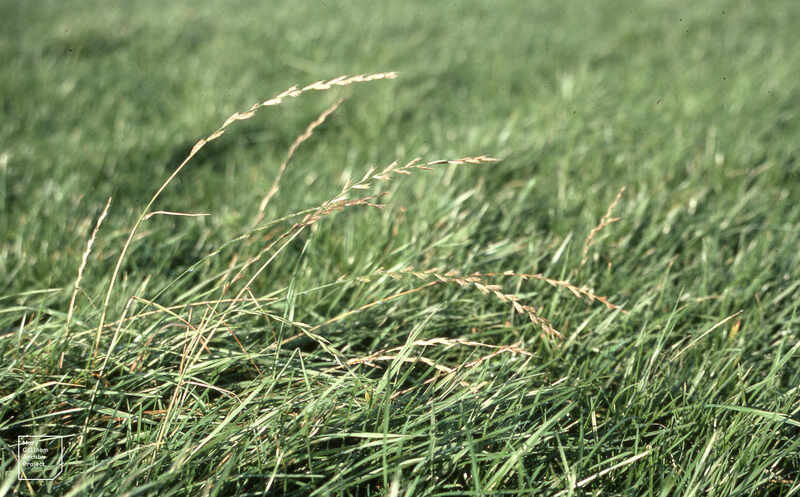
Photo Credit: Dr Mary Gillham Archive Project / Flickr / CC BY 2.0
With its fine texture, dark green color, and lush appearance, perennial ryegrass is a commonly used grass in various settings, such as athletic fields, landscapes, and cattle fields. It’s particularly popular among homeowners who enjoy spending time outdoors, thanks to its rapid growth and a high tolerance for foot traffic.
While perennial ryegrass thrives in sunny areas, it can also handle partial shade. However, remember that this grass type requires significant water usage and does not tolerate drought well. So, if you’re considering incorporating ryegrasses into your yard, keeping this in mind is crucial.
Classification: Cool-season grass
Spreads by: Has a bunch-type growth habit
Shade tolerance: Low
Drought tolerance: Low
Foot traffic tolerance: High
Maintenance needs: Moderate mowing and fertilization requirements. Thatch is not significant.
Mowing height: Set mowing height to 1.5 to 2.5 inches
Potential for disease: High. Common diseases include gray leaf spots, red thread, and leaf spot/melting-out.
Soil pH: Can grow in soils with a pH between 5 and 8 but prefers between 6 and 7.
Soil type: Prefers good drainage and fertility but can tolerate some poor drainage.
Other notes: It is often mixed with Kentucky bluegrass for a more traffic-tolerant and disease-resistant turf.
3. Fine Fescue
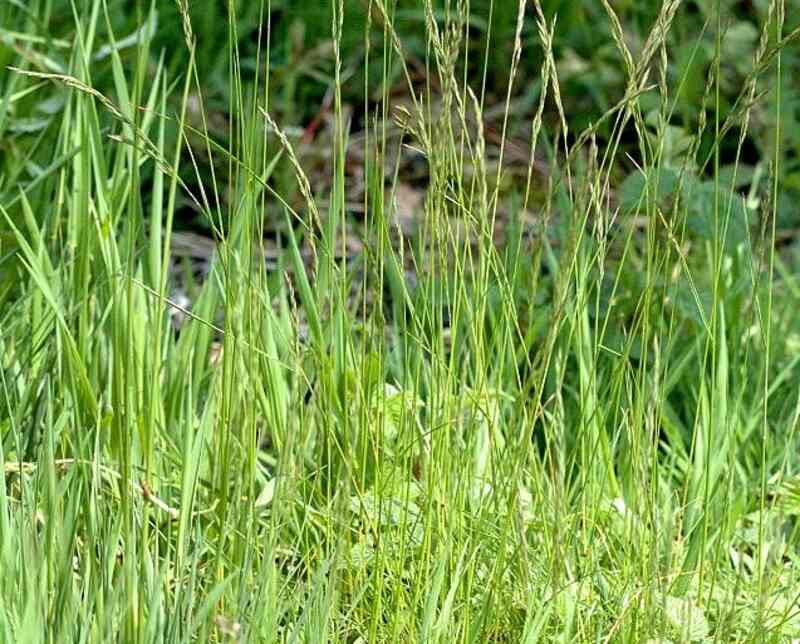
Photo Credit: James K. Lindsey / Wikimedia Commons / CC BY-SA 2.5
Fine fescue, particularly the chewings variety, is highly regarded among cool-season grasses with its delicate texture and impressive ability to tolerate shade. If you have a shaded backyard, fine fescues may be an excellent grass type to consider.
Furthermore, fine fescues are low-maintenance, requiring less water, fertilizer, and mowing than other grass types. As long as they receive regular watering, they are the perfect option for busy homeowners who want to enjoy a beautiful landscape without the additional maintenance effort.
Classification: Cool-season grass
Spreads by: Creeping red fescue spreads by rhizomes, while other fine fescues are bunch-type grasses, such as chewing, hard, and sheep fescues.
Shade tolerance: Moderate to High, depending on species
Drought tolerance: Moderate to High, depending on species
Foot traffic tolerance: Low to Moderate, depending on species
Maintenance needs: Low fertilizer and mowing needs.
Mowing height: Set mowing height between 2.5 and 4.0 inches, depending on species.
Potential for disease: Moderate. Common diseases include red thread, leaf spot, dollar spot, summer patch, and powdery mildew.
Soil pH: 6-6.5
Soil type: Will not perform well in wet soil conditions. It prefers drier soils and tolerates a wide range of soil types and fertility.
Other notes: Fine fescue grasses are often added to mixtures with other cool-season grasses, such as Kentucky bluegrass or perennial ryegrass, to create a dense, attractive lawn that can withstand shade and drought.
4. Tall Fescue
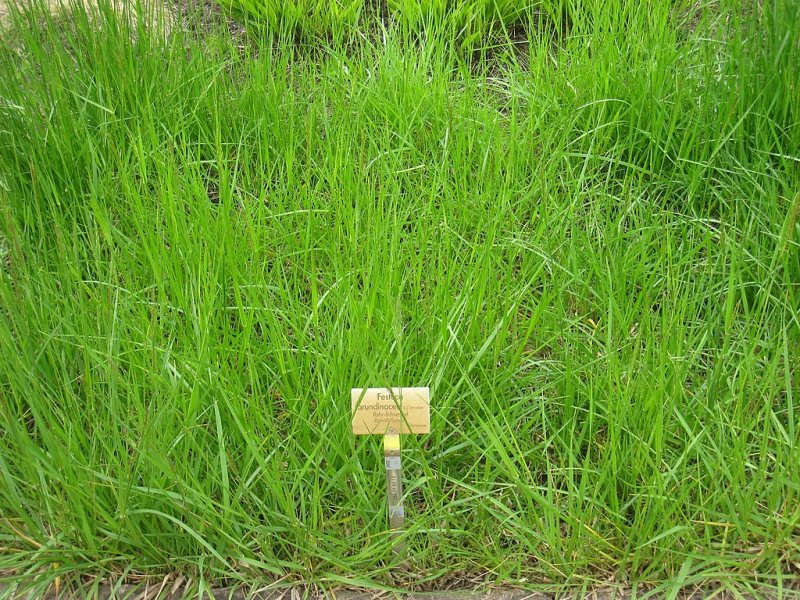
Photo Credit: Daderot / Wikimedia Commons / Public domain
Tall fescue has a beautiful deep green color and coarse texture. Its deep root system enables it to withstand heat and drought conditions better than other grass types.
Tall fescue is a great low-maintenance option as long as you don’t mind frequent mowing. Its rapid growth, deep root system, and low maintenance requirements make it an excellent choice for your yard. Consider incorporating tall fescue into your landscaping if this sounds appealing to you.
Classification: Cool-season grass
Spreads by: Produces short rhizomes but has a bunch-type growth habit
Shade tolerance: Moderate
Drought tolerance: Moderate to High
Foot traffic tolerance: Moderate
Maintenance needs: Frequent mowing. Does not produce significant thatch.
Mowing height: Set mowing height to 2 inches when grass reaches 3 inches tall.
Potential for disease: Tolerant of most diseases when properly maintained.
Soil pH: 5.5-6.5
Soil type: Adapted to a wide range of soil conditions but prefers fertile clay soils with good drainage.
Other notes: Many tall fescue lawns become thin after hot, dry summer conditions. Thin, tall fescue lawns can form clumps and become unsightly. To prevent this from occurring, it’s usually necessary to overseed tall fescue lawns in the fall.
Best Warm-Season Grass for Pennsylvania
The southernmost portion of Pennsylvania rests in the transition zone, which provides optimal conditions for both cool-season and warm-season grasses to grow. While Pennsylvania’s grass of choice tends to be cool-season grass, Zoysiagrass is a popular warm-season grass for Pennsylvania’s southernmost lawns.
5. Zoysiagrass
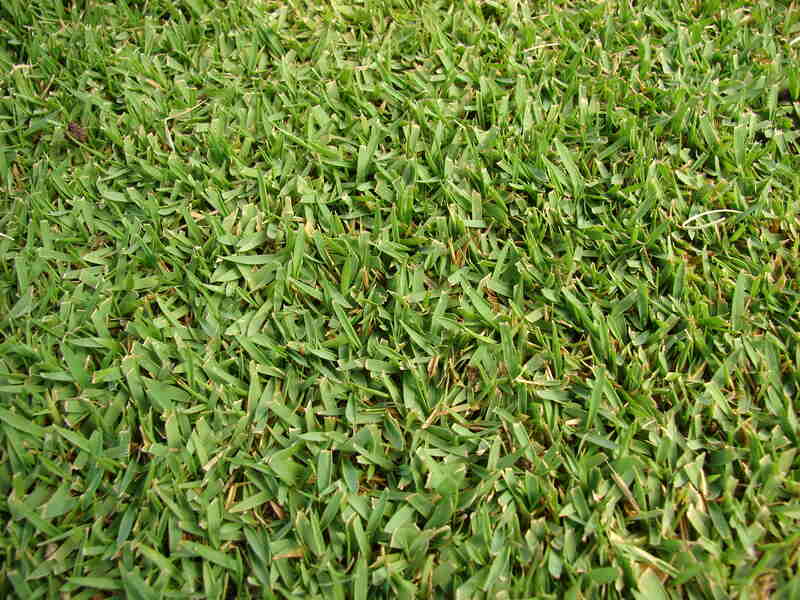
Photo Credit: Forest & Kim Starr / Wikimedia Commons / CC BY 3.0
A warm-season grass, Zoysiagrass is highly desirable for its lush appearance and ability to feel comfortable walking barefoot.
Zoysiagrass is perfect for high-traffic areas, making it an excellent choice for households with children or pets. However, it should be noted that it has a slow recovery rate, so it may take some time to heal from any damage caused by heavy traffic. Zoysiagrass only has a moderate tolerance to shady areas, which means it needs sunlight to grow.
Additionally, Zoysiagrass has a high salt tolerance. Overall, Zoysiagrass is an excellent option for southern Pennsylvania homeowners looking for a lawn that can handle high traffic and warmer weather.
Classification: Warm-season grass
Spreads by: Stolons and rhizomes
Shade tolerance: Moderate
Drought tolerance: Moderate to High
Foot traffic tolerance: High, but recovers slowly from damage
Maintenance needs: Low nitrogen fertilization requirements, although it’s prone to thatch build-up.
Mowing height: Set mowing height between 1 and 2 inches.
Potential for disease: Good disease tolerance overall
Soil pH: 6-6.5
Soil type: Well-draining, some cultivars more tolerant of a wide range of soils than others
Other notes: Zoysia has a remarkable ability to thrive in drought conditions due to its deep-rooted nature, allowing it to reach groundwater and adapt to different environments.
FAQ About Pennsylvania Grass Types
If you’re looking for grass options for your lawn in the western region of Pennsylvania, tall fescue, perennial ryegrass, fine fescue, and Kentucky bluegrass are recommended.
Pennsylvania lawns primarily grow cool-season grasses, such as Kentucky bluegrass, perennial ryegrass, fine fescue, and tall fescue.
Fine fescue is among the easiest cool-season grasses to maintain. It’s known for its fine texture, shade tolerance, and low maintenance requirements, making it an attractive option for homeowners and landscapers.
Choose Plant and Grass Varieties for Your Pennsylvania Landscape
Select the right grass for your lawn by considering your available space, how often you expect to walk in the yard, and how much maintenance you’re willing to perform to keep a healthy lawn.
For instance, Kentucky bluegrass or perennial ryegrass can handle the foot traffic if you plan to host parties and barbecues. If you have a shaded yard, fine fescue is an excellent option. For a low-maintenance lawn, consider tall fescue or fine fescue.
It’s essential to note that grass is just one aspect of a beautiful landscape, as there are many low-maintenance landscaping options and native plants in Pennsylvania. Need the help of a Pennsylvania lawn care pro near you? We have trusted lawn care pros in Pittsburgh and many more cities across the state.
Main Image Credit: sk / Flickr / CC BY-ND 2.0